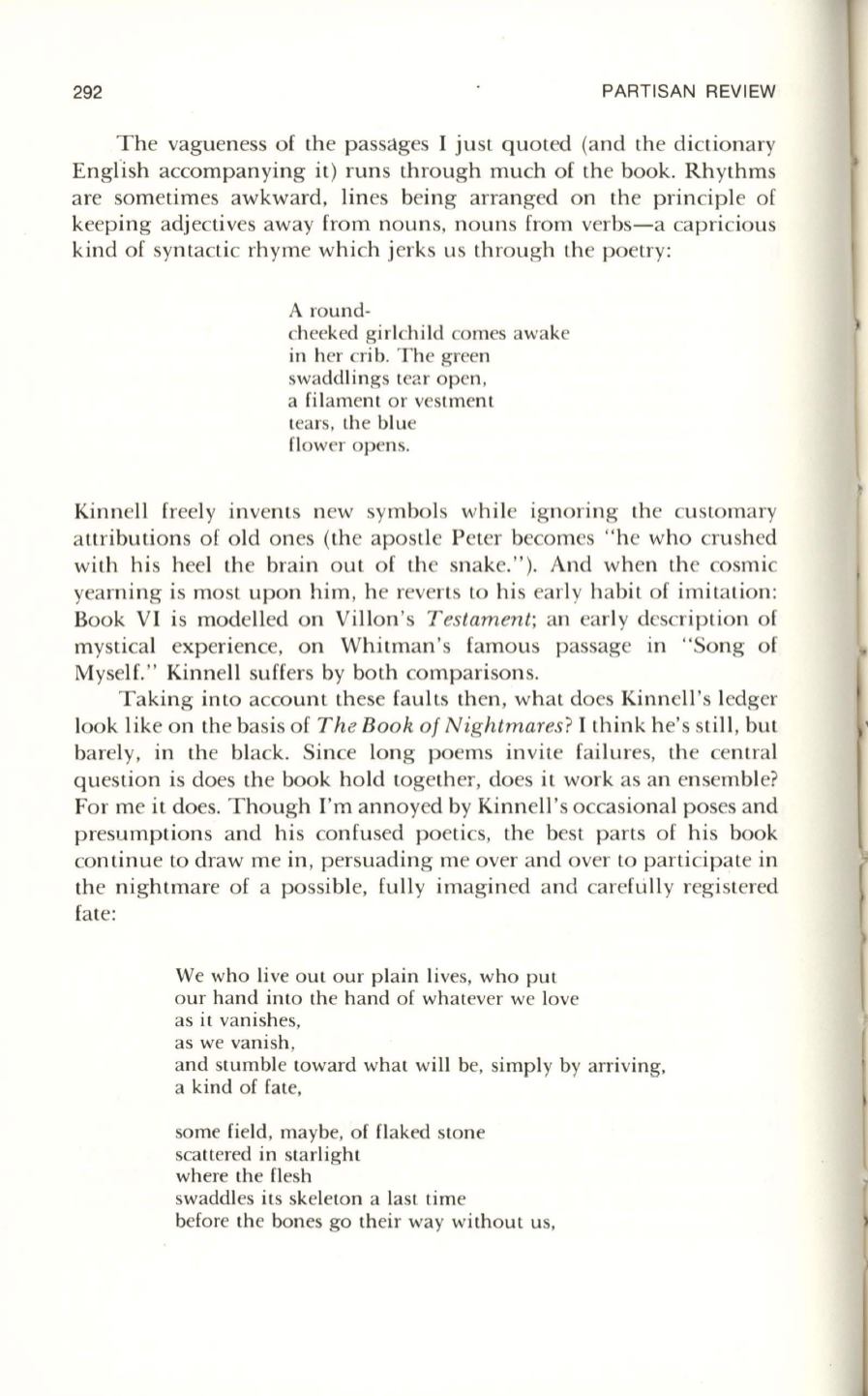
292
PARTISAN REVIEW
The vagueness of the passages I just quoted (and the dictionary
EngI"ish accompanying it) runs through much of the book. Rhythms
are sometimes awkward, lines being arranged on the principle of
keeping adjectives away from nouns, nouns from verbs-a capricious
kind of syntactic rhyme which jerks us through the poetry:
A round-
cheeked girlchild comes awake
in her crib. The green
swaddlings tear open,
a filament or vestment
tears, the blue
flower opens.
Kinnell freely invents new symbols while ignoring the customary
attributions of old ones (the apostle Peter becomes "he who crushed
with his heel the brain out of the snake."). And when the cosmic
yearning is most upon him, he reverts
to
his early habit of imitation:
Book
VI
is modelled on Villon's
Testament;
an early description of
mystical experience, on Whitman's famous passage in "Song of
Myself." Kinnell suffers by both comparisons.
Taking into account these faults then, what does Kinnell's ledger
look like on the basis of
The Book of Nightmares?
I think he's still, but
barely, in the black. Since long poems invite failures, the central
question is does the book hold together, does it work as an ensemble?
For me it does. Though
I'm
annoyed by Kinnell 's occasional poses and
presumptions and his confused poetics, the best parts of his book
continue to draw me in, persuading me over and over to participate in
the nightmare of a possible, fully imagined and carefu ll y registered
fate:
We who li ve out our plain lives, who put
our hand into the hand of whatever we love
as it vanishes,
as we vanish ,
and stumble toward what wi ll be, simply by arriving,
a kind of fate,
some field, maybe, of flaked stone
scattered in starlight
where the flesh
swaddles its skeleton a last time
before the bones go their way without us,


